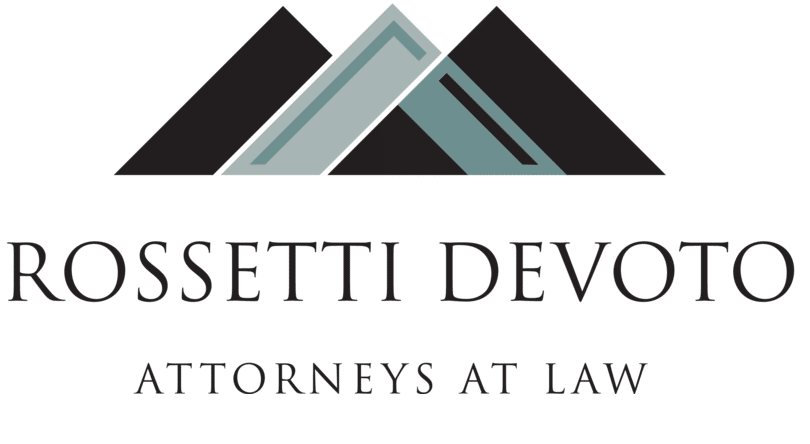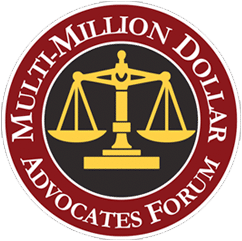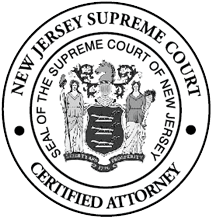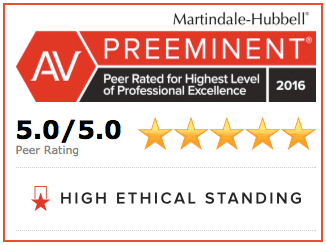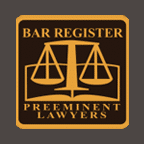The Wrongful Death Act
Read more about the wrongful death act written by Andrew J. Rossetti.
The Wrongful Death Act
Andrew J. Rossetti
March 1999
I. WRONGFUL DEATH LAW
1. When action lies
Death caused by the wrongful act of another where pecuniary losses are sustained.
N.J.S.A. 2A:31-1
When the death of a person is caused by a wrongful act, neglect or default, such as would, if death had not ensued, have entitled the person injured to maintain an action for damages resulting from the injury, the person who would have been liable in damages for the injury if death had not ensued shall be liable in an action for damages, notwithstanding the death of the person injured and although the death was caused under circumstances amounting in law to a crime.
Where person who has been injured by tortious act of another which later causes his death recovers from tort-feasor prior to his death, his beneficiaries under Act have separate and independent right of action Alfone v. Sarno, 168 N.J. Super. 315 (App. Div. 1979) modified on other grounds 87 N.J. 99.
When survival and wrongful death actions lie arising out of the same tortious conduct they should be joined in the same action. Alfone, supra. Lawlor v. Cloverleaf Memorial Park, Inc., 10 N.J. Super. 134 (Law Div. 1968), reversed on other grounds 106 N.J. Super. 374, reversed on other grounds 56 N.J. 326.
2. Persons entitled to sue or make claim
Died with a will = Executor
Or, died without a will = Administrator ad Prosequendum
No assets needs to be appointed
Died without a will = Administrator
Assets
N.J.S.A. 2A:31-2
Every action commenced under this chapter shall be brought in the name of an administrator ad prosequendum of the decedent for whose death damages are sought, except where the decedent dies testate and his will is probated, in which event the executor named in the will and qualifying, or the administrator with the will annexed, as the case may be, shall bring the action.
Representatives Duty:
In fact, person acting in representative capacity has obligation to distribute recovery to those entitled. Jurman v. Samuel Braen, 47 N.J. 586 (1966).
3. Limitations of Actions
Within 2 years of death
N.J.S.A. 2A:31-3
Every action brought under this chapter shall be commenced within 2 years after the death of the decedent, and not thereafter.
4. Persons entitled to amount recovered
N.J.S.A. 2A:31-4
Persons entitled to intestate property.
Moreover, the amount recovered in proceedings under this chapter shall be for the exclusive benefit of the persons entitled to take any intestate personal property of the decedent and in the proportions in which they are entitled to take the same.
If any of the persons so entitled were dependent on the decedent at his death, they shall take the same as though they were the sole persons so entitled, in such proportions, as shall be determined by the court without a jury, and as will result in a fair and equitable apportionment of the amount recovered, among them, taking into account in such determination, but not limited necessarily thereby, the age of the dependents, their physical and mental condition, the necessity or desirability of providing them with educational facilities, their financial condition and the availability to them of other means of support, present and future, and any other relevant factors which will contribute to a fair and equitable apportionment of the amount recovered.
How distributed:
A) Wrongful death recovery is not part of the estate and is distributed without regard to decedent last will and statement. Schmoll v. Creely, 54 N.J. 194 (1969).
B) Proportions determined by the court when minors involved the court will appoint guardian ad litem.
McCombs v. N.J. State Police, 242 N.J. Super. 261 (Law Div. 1990) Although the award may be apportioned among several parties, it never loses its characterization as a single award. McCullen v. Maryland Casualty Co., 127 N.J. Super. 231 (App. Div. 1974), aff’d 67 N.J. 416 (1975).
C) In fact, mere relation is not enough. So, there must be dependency. Jurman v. Brean, 47 N.J. 586 (1966). However, there may be actual financially dependent parties who do not qualify to take. In Eyoma v. Falco, 247 N.J. Super. 435 (1991), a decedent was survived by his mother and his two children. Although the Court heard testimony from the mother concerning her actual dependency on the decedent, the court did not award damages to her. So, a parent will take only where there is no issue or spouse. Hence, the mother in Eyoma did not have an entitlement to an award. See also Goodman v. Newark Beth Israel, 251 N.J. Super. 533.
D) Right of spouse to partake of benefits of Wrongful Death Act is not conditioned on dependency. Cassano v. Durham, 180 N.J. Super. 620, 436 A.2d 118 (Law Div. 1981).
Relationship with the Decedent
In fact, person who had maintained “live in” relationship with decedent without benefit of marital ceremony, was not a “surviving spouse” within meaning of Sec. 3A:2A-34 (repealed; see, now Sec. 3B:5-3) and thus, she could not recover under Wrongful Death Act which stated that amounts to be recovered under such Act were to be for exclusive benefits of person entitled to take any intestate personal property. Cassano v. Durham, 180 N.J. Super. 620, 436 A.2d 118 (Law Div. 1981).
Widow of deceased who died without any children was entitled under the statute of distribution to entire recovery for his death. Cibulla v. Pennsylvania Reading Seashore Lines, 25 N.J. Misc. 98, 50 A.2d 461 (1947).
5. Assessment of damages by jury
Pecuniary damages only. In fact, purpose of the award is the replacement of services that the decedent would have rendered and nothing more. Hodgins v. Serrano, 186 N.J. Super. 465 (App. Div. 1982).
N.J.S.A. 2A:31-5
In every action brought under the provisions of this chapter the jury may give such damages as they shall deem fair and just with reference to the pecuniary injuries resulting from such death, together with the hospital, medical and funeral expenses incurred for the decedent.
A) Elements of Pecuniary Loss
- Deceased earnings with allowance for deceased’s own needs
- Also, loss to deceased children of: Care, Guidance, Advice
- Or, loss of inheritance, if over and above what would have been given to the next of kin.
- Additionally, funeral expenses
- Also, hospital and medical expenses
- Then, Considerations
- And, prospective earning capacity
- Additionally, probable life expectancies of deceased and surviving beneficiaries
- Also, decedent’s physical condition
- Then, household expenses attributable to deceased
- Then, emotional loss, loss of consortium, grief, anguish, etc. NOT covered under Wrongful Death Act.
- Also, punitive damages NOT recoverable. Turon v. J&L Construction Co., 8 N.J. 543 (1952).
- And, Child Decedent
In fact, jury in awarding damages for death of 15 year old boy could consider that mother, as sole surviving parent, would have been entitled to earnings during boy’s minority. And, even though such earnings would not have been substantial before the boy reached age of 21, jury could take into consideration the monetary value of his service in and about the household and possible income from summer jobs, while he was still only a student, offset by cost of his maintenance, and could reasonably assume that expenses of college and graduate study would have been met by scholarship and fellowship grants in view of boy’s very high intellectual capacity. Gluckauf v. Pine Lake Beach Club, Inc., 78 N.J. Super. 8, 187 A.2d 357 (App. Div. 1963).
B) Unborn Fetus
In Giardina v. Bennett, 11 N.J. 412 (1988), the Court reaffirmed Graf v. Taggert, 43 N.J. 303 (1964), which held that a family could not recover under the Wrongful Death Act for the death of an unborn child.
In fact, the Court rests its analysis upon the fact that the Wrongful Death Act states that the death must be to a person, and that New Jersey has consistently throughout history not recognized a fetus as a person.
C) Death of a Baby
In Carey v. Lovett, 132 N.J. 44 (1992), the Supreme Court held that (1) Parents can recover for their emotional distress caused by medical mal practice in birth and death of their daughter, (2) Parents may recover some damages for the wrongful death of their two week old child, although very limited damages, and (3) Parents may recover for the pain and suffering of the child for the two weeks the baby was alive, as long as the pain and suffering was conscious.
Furthermore, the jury in Carey awarded $450,000 for the wrongful death claim. In fact, the Court held that this was so excessive as to constitute a miscarriage of justice because the record was silent about the infant’s potential economic worth. Also, the Court acknowledged the lack of ability to prove an infant’s economic worth. And, noted that some recovery is appropriate despite these uncertainties. But, yet held that $450,000 was definitely a product of passion, prejudice of partiality and set aside the award.
6. To whom amount recovered paid release of cancellation of judgment. Payment must be made to the General Administrator not the Administrator Ad Prosequendum.
N.J.S.A. 2A:31-6
In fact, when an action is commenced by an administrator ad prosequendum under this chapter, no payment in settlement thereof or in satisfaction of a judgment rendered therein shall be made to him. But, such payment shall be made only to the duly appointed general administrator of the estate of the decedent, who has filed a bond or supplemental bond adequate to protect the persons entitled to receive the amount so paid.
No release or cancellation of a judgment, whether by warrant or otherwise, by an administrator ad prosequendum or by his attorney of record or attorney in fact shall release the person making payment from liability to the persons entitled to any intestate personal property of the decedent, shall operate as a valid cancellation of the judgment. Or, be an authority to the clerk of any court to cancel the judgment of record.
II. DIRECT EXAMINATION OF A PARENT SETTING FORTH THE WRONGFUL DEATH CLAIM FOR THE LOSS OF AN 8 YEAR OLD CHILD
1. Establish The Legal Parent Child Relationship
- Date of the marriage of the parents
- Date of birth of the child
- Other children in the family
(establish chronological order)
2. Develop Parent Biographies (acorn philosophy)
- Firstly, education: Did one or both of the parents go to college or graduate school?
- Secondly, employment: What kinds of jobs have the parents growing up and currently – does father carry two jobs?
- Thirdly, earnings/savings: How much do the parents earn – are they savers – how was the college fund for the child going to be funded – was the child expected to get a job and contribute to the family income – paper route?
- Lastly, community activities: Church, bingo, Jaycees (shows commitment to helping the elderly and people in general)
3. Talk About The Parents – Grandparent Relationship (demonstrate family harmony and projection of future denied potential)
- Firstly, living Arrangements: Do the grandparents live with the parents or nearby to the parents?
- Secondly, financial Involvements: Do the parents help out their parents with a weekly or yearly stipend?
- Thirdly, shopping Responsibilities: Do the parents take the grandparents clothes or grocery shopping or help carry in heavy bundles?
- Then, visitation Schedules: How often do the families see each other? Do the parents stop in for coffee on a weekly or bi-weekly basis?
- Also, family Vacation Plans: Does the extended family take trips together or do the children help transport the grandparents to the airport or visit the grandparents in their winter habitat?
- Lastly, advice and Counsel: Who helps out on day to day or business decisions – who has a few words of encouragement on down days and is there to cheer on good days?
4. Talk About the Child’s Achievements to Date of Death
- Firstly, infant development: A baby who walked at 8 months and talked in paragraphs at one year
- Secondly, nursery school: Teacher evaluation showed a child with great potential – began to develop leadership qualities and gain peer friendships
- Thirdly, religious school: Develop good religious training for people caring
- Lastly, organized clubs: Shows leadership and inter people relationships and physical strengths
Cub Scouts
Or, Pop Warner Football
Little League
Unorganized physical pursuits:
Street pick-up games
Also, bike riding
Or, baseball card trading
· Chores at home: What types of participation in family obligations was this child demonstrating even at a young age
For example, clean room
Unload groceries
Also, help with dishes after meals
Additionally, takes Care of Family Pet:
Was he a caring responsible person
· Overall, general warmth towards people
5. Review Dependency of Parent-Child Relationship
- Firstly, Bedtime Reading and Discussions: From what age did the parents begin interacting on private time with this child – sharing input on day to day activities and looking for analogies of future expectations
- Secondly, Family Trips: How did this family spend their weekends and school holidays – could we expect continued closeness among this family unit – did all the children participate in the planning and preparations needed for vacation time
- Thirdly, Tutoring Sessions: Did the child need extra help in school or did he just like sharing what he was learning with his parents
- Then, Advice and Counsel: Could one expect that the closeness developed at this age would have continued into adulthood in a reciprocal type relationship
- Lastly, Family sing-alongs: Demonstrate family dependency and unity through activities
6. Set Forth Child – Sibling Relationship
- Firstly, early morning and after school games together
- Secondly, salk to school together
- Thirdly, share clothes
- Then, general closeness and confidence
- Also, planned a birthday breakfast for parent together
- Finally, overnight camping together
7. Touch on Child – Grandparent Relationship
- Firstly, sleepover events
- Secondly, calls during the week to touch base
“Liked to comb grandparent’s hair and make her tea with just the right amount of milk and sugar added.”
III. Green v. Bittner, The Seminal Case
In Green v. Bittner, 424 A.2d 210, 85 N.J. 1 (1980), the New Jersey Supreme Court clarified what damages parents may recover for the wrongful death of their child. Essentially, these damages are confined to pecuniary loss; emotional loss may not be recovered. The Green court clearly held that “[t]he emotional loss flowing from a loss of companionship and society is still beyond the reach of any recovery in a wrongful death action.” Parents may recover for the loss of value of the child’s anticipated help with household chores and for the loss of anticipated direct financial contributions by the child after becoming a wage earner. In addition, parents may also be entitled to the pecuniary value of their loss of the child’s companionship, advice and guidance as they grow older.
Loss of Consortium
According to the Green, a remedy for loss of companionship must be strictly limited to the pecuniary value of the services that the companionship would have provided. Specifically, this value must be substantially equivalent to the services provided by nurses or hired companions who care for the aged and infirm. As the court indicates, these “companions” would provide such services as providing and administering to basic needs; preparing and serving meals; grocery shopping; and giving medication. The financial value of the loss of companionship, however, is limited to “what the marketplace would pay a stranger with similar qualifications for performing such services.”
Loss of Guidance and Advice
Recovery for loss of guidance and advice must also be confined to pecuniary value. The Green court recognized that all persons need counsel in particular situations for specific purposes. For instance, people need assistance when facing a business decision or seeking relief from depression. Recovery, however, is limited to that kind of advice or guidance “that could be purchased from a business advisor, a therapist or a trained counselor.”
Damages and Proof Issues
Damages for loss of companionship, guidance, and advice are recoverable without any showing that the child was likely to render such services. In fact, if a normal parent-child relationship is found to exist, a jury could find it sufficiently probable that, had the child lived, he would have rendered the kind of companionship services and advice mentioned above. “It will be up to the jury to decide what services would have been rendered, and what their value is.” In addition, “[t]here need be no showing that companionship and advice will probably be purchased by the parent because of the child’s death; it is sufficient that the deceased would have rendered them.”
While the use of an expert is not legally required in these cases, it is, as the court mentioned, helpful and desirable. Finally, an award of actual pecuniary losses suffered will take into account the future cost that would be incurred by the parents in maintaining the child.
IV. BASIC GROUND RULES FOR THE EXPERT
1. Damages should be discounted to present value. See Tenore v. Nu Car Carriers, 67 N.J. 466 (1975), Matthews v. Nelson, 57 N.J. Super. 515, 520 (App. Div. 1959), certif. den., 31 N.J. 296 (1960). This rule recognizes that the decedent’s income would have been spread over his lifetime had he lived. By discounting recovery to present value, plaintiff does not receive the windfall which would otherwise inure. Fairness to defendant demands this economic adjustment.
2. Experts may testify regarding expected inflationary trends. Since the award of damages is intended to represent “current compensation for future loss,” failure to consider the effects of inflation would result in an artificially low recovery. Tenore, 67 N.J. at 475. Recognizing the relevance of inflation on the value of an award, the Court acknowledged the usefulness of expert testimony to guide the jury in their assessment of damages in spite of the concern that estimates of future inflationary rates are speculative. Fairness to plaintiff demands this economic adjustment. Defendant’s rebuttal expert ensures a balanced presentation. Tenore, 67 N.J. at 481.
3. The expert may not introduce tables into evidence purporting to suggest an aggregate sum certain as an appropriate award. Tenore, 67 N.J. at 482. The reduction of the expert’s data to a sum certain assumes fact finding and infringes on the province of the jury. Therefore, while the expert may instruct the jurors regarding the proper method of calculation, he may not perform those calculations. See also Lovenguth v. D’Angelo, 258 N.J. Super. 6 (1992); Dunn v. Praiss, 256 N.J. Super. 180 (App. Div. 1992).
Keep in mind
This, however, does not bar the attorney from making a bottom line calculation in closing. Rather, the jurors must be free to factor in the influence of any elements which might alter the quantification. “[T]he projection of a gross figure before the jury submitted by an expert tends to exert an undue psychological impact leading to the danger of its uncritical acceptance by the jury in the place of its own function in evaluating the proofs.” Tenore, 67 N.J. at 482-483. Hence, the expert may neither offer an opinion as to the value of the cause of action nor may his data be abridged, converted to table, and submitted to the jury as evidence.
4. Evidence regarding decedent’s income tax liability is admissible. Recovery should be based on the decedent’s net income. Therefore, decedent’s tax liability is relevant to the jury’s assessment of damages. To ensure a more accurate estimation, defendant’s may either cross-examine plaintiff’s witnesses or present their own extrinsic evidence of tax liability. Tenore, 67 N.J. at 494-495. Plaintiff’s are not entitled to the windfall of an award calculated on gross income.
5. The court should instruct the jury that plaintiff’s award is not subject to income tax. Absent this information, the jury might increase the award to off-set a supposed but non-existent tax liability. Tenore, 67 N.J. at 495. Therefore, for the same reasons that evidence of the decedent’s tax liability may be introduced into evidence, instructions regarding the lack of such liability to plaintiffs is appropriate.
The rules taught in Tenore are still applicable. Since 1975, wrongful death case law has evolved but not deviated from the basic propositions of Tenore. More recent cases reiterate Tenore and address other related issues.
Reaffirmation
The prohibition against allowing an expert to present specific computations of aggregate damages to the jury and to introduce those computations into evidence in the form of table was reaffirmed in Genovese v. New Jersey Transit Rail Operations, Inc., 234 N.J. Super. 375, 379 (App. Div. 1989) certif. Den. 118 N.J. 195 (1989) and most recently in Dunn v. Praiss, 256 N.J. Super. 180 (App. Div. 1992).
The Dunn court clarified the proper use of tables illustrating mathematical formulas during the testimony of economic experts. The expert may properly prepare and reference a table during his testimony to aid the jury by illustrating the interrelationship of his data. However, such tables are not properly admitted into evidence because the data contained thereon is not a record of proven facts but a memorialization of “the expert’s opinion of the present value of future earning after enhancement and deductions determined reasonable by the expert. Dunn, 256 N.J. Super. At 199.
The rule of Tenore is somewhat modified when the issue of damages is tried before a judge without a jury. While experts are prohibited from explicitly quantifying damages in wrongful death cases tried before a jury, it is within the trial court’s discretion.
V. SAMPLE ARGUMENT TO ESTABLISH THAT WRONGFUL DEATH CLAIM AND SURVIVAL CLAIM ARE EACH AFFORDED SINGLE LIMIT COVERAGE.
I. THE WRONGFUL DEATH ACTION IS A SEPARATE AND DISTINCT CAUSE OF ACTION FROM THE SURVIVAL ACTION.
As recently as June of 1998, our Appellate Division in Smith v. Whitaker, 313 N.J. Super. 165 (App. Div. 1998) confirmed that a wrongful death action was distinct from a survival action. The court stated:
In Alfone v. Sarno, 168 N.J. Super. 315, 403 A.2d 9 (App. Div. 1979), modified on other grounds, 87 N.J. 99 432 A.2d 857 (1981), we said:
The Wrongful Death Act is distinct from the so-called “survival action,” N.J.S.A. 2A:15-3, which gives executors or administrators a right of action for tortious injury or damage to the deceased or his property incurred prior to death. N.J.S.A. 2A:15-3. In the usual case, both actions are joined.
See Alexander v. Whitman, 114 F.3d 1392, 1399 (3rd Cir.) Cert. Denied, U.S., 118 S. Ct. 367 139 L. Ed.2d 286 (1997).
See also Lombardi v. Simon, 266 N.J. 708 (Law Div. 1993) and Cockinos v. GAF Corp., 259 N.J. 204 (Law Div. 1992).
Id. At 318:
The Smith court cited Alfone v. Sarno, 168 N.J. Super. 315 (App. Div. 1979) which further explained this point:
The Wrongful Death Act is distinct from the so-called “survival action,” N.J.S.A. 2A:15-3, which gives executors or administrators a right of action for tortious injury or damage to the deceased or his property incurred prior to death. N.J.S.A. 2A:15-3. In the usual case, both actions are joined.
It is, therefore, clear that our Wrongful Death Act created a separate cause of action for the loss suffered by designated beneficiaries. That the act, like Lord Campbell’s Act, created a new cause of action, distinct from the survival action, was most forcefully observed in Cooper v. Shore Electric Co., supra, 63 N.J.L. at 563-64, where the court of Errors and Appeals in so concluding quoted from Lord Blackburn’s observations while construing Lord Campbell’s Act in the House of Lords in Seward v. Vera Cruz, 10 App. Cas. 59, 70-71 (1885), that it is “an action which is new in species, new in its quality, new in its principles, in every way new.”
Id. At 323.
The Alfone court clearly considered whether the wrongful death claim was derivative:
As noted above, the basic problem is to determine whether the death action is derivative from and dependent upon the existence of a viable cause of action in the deceased as of the time of death or whether it is independent thereof.
Id. At 324.
The Court held:
We therefore accept the view that the statutory terminology means nothing more than that where a person has been injured by a tortious act which later causes his death, the beneficiaries under the wrongful death act have a separate and independent right of action, qualified only by the strong policy against the recovery of duplicate damages. To the affect that the New Jersey courts have recognized that the beneficiary’s claim under the Wrongful Death Act is an independent cause of action and “not a derivative of the decedent’s personal injury claim.”
Id. At 328. (emphasis added)
In Gangemi v. National Health, 291 N.J. Super. 569 (App. Div. 1996), the Appellate Division held that the sister of the decedent had standing to bring a wrongful death claim. This is further confirmation that a wrongful death claim is separate and distinct from the survival action.
II. THE WRONGFUL DEATH CLAIM AND SURVIVAL CLAIM ARE EACH AFFORDED SINGLE LIMIT COVERAGE.
In Defelice v. Beell, 274 N.J. Super. 592 (App. Div. 1994), the plaintiffs contended that each dependent had an independent cause of action. (This is not plaintiff’s contention in this case).
The Court held that all dependents’ claims under the Wrongful Death Act are brought in a single claim.
The Court stated:
The same is true with respect to a claim made under the Wrongful Death Act. The cause of action for those suffering pecuniary loss is brought by a single party as administrator ad prosequendum or executor. N.J.S.A. 2A:31-2. An individual dependent has no separate cause of action under the Act. Schueler v. Strelinger, 43 N.J. 330, 349, 204 A.2d 577 (1964).
Id. At 598.
We hold that where one person is injured and dies from injuries sustained in an automobile accident, the loss of care, guidance, advice and services claims of the dependents are subsumed in a single action under the Wrongful Death Act, and are components of a single pecuniary loss claim. The claim of the administrator ad prosequendum or the executor is subject to the per-person limit of the policy.
Id. At 598.
The court was clear that where claims are derivative, like a loss of consortium claim by a spouse, they are subject to the same per person policy limit as the injured person.
However, where there is a wrongful death claim and a personal injury claim, they each are afforded single limit coverage.
The court stated:
Under our case law, the wrongful death claim and Mrs. Thompson’s personal injury claim would have each been afforded single-limit coverage. See Wolfe v. State Farm Ins. Co., supra, 224 N.J.
In Wolfe v. State Farm Ins. Co., 224 N.J. Super. 348 (App. Div. 1988), the Appellate Division held where the claim is separate, like an emotional distress claim, per-accident policy limits were available instead of per person. The Court held:
We are persuaded that, in New Jersey, a cause for emotional distress is a separate action, not a derivative claim and that plaintiff’s insurance contract construction must prevail. Gencolvez v. Patuto, supra, 188 N.J. Super. At 628. Moreover, the term “bodily injury” encompasses a claim for emotional distress. NPS Corp. V. Insurance Co. of North America, supra, 213 N.J. Super. At 554.
Id. At 354.
CONCLUSION
In summary, plaintiff’s wrongful death claim is a separate and distinct claim. Moreover, it is brought by a single administrator ad prosequendum or executor on behalf of the beneficiaries. In fact, separate and distinct claims, like wrongful death claims are afforded their own single limit per person coverage.
Therefore, plaintiff is entitled to $25,000 for the decedent’s survival action and $25,000 for the decedent’s wrongful death claims.
